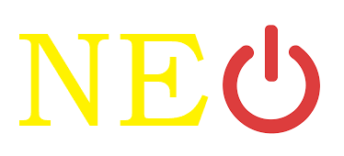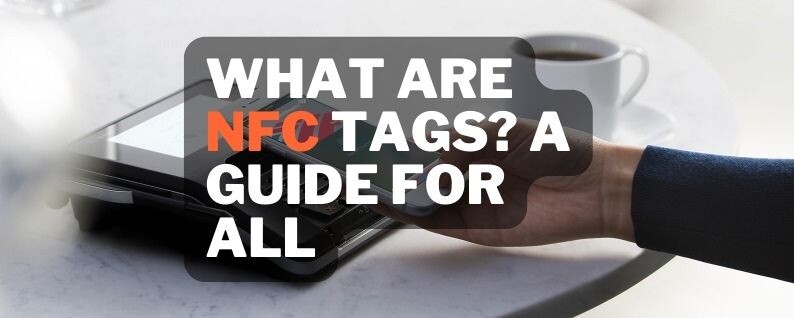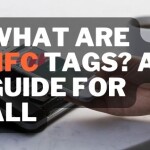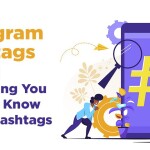Smart devices have become incredibly popular in recent years. And the more we can use smart devices to interact with our surroundings, the more powerful they become. Near-field communication (NFC) is one of the components that enables devices to connect with each other and exchange data, which is essential for a seamless user experience for connected living.
About NFC tags

Near field communication, or NFC, is a well-liked wireless technology that enables data transfer between two devices that are close to one another. For other short-range applications, such as mobile payments, it is frequently used as a quicker and more secure alternative to QR codes. Practically speaking, the technology is quite simple; electronic reader devices are used to read data from different NFC tags.
NFC tags are surprisingly adaptable and frequently come in handy when you need to quickly transfer small amounts of data. After all, compared to Bluetooth pairing or other traditional wireless communication techniques, tapping a surface requires less time and effort. For instance, NFC tags built into digital cameras and headphones can be quickly activated to establish a wireless connection.
How NFC tag Work?


NFC tags are available in a range of sizes and shapes. The most basic ones are frequently constructed in the shape of a square or circle sticker. These tags are made of a thin copper coil and a tiny storage area on a microchip, and they have a very basic design.
Through electromagnetic induction, the coil enables the tag to wirelessly receive power from the NFC reader. In essence, the moment you place a powered NFC reader close to the tag, it becomes activated and transmits any data that is stored on its microchip to the receiver. If sensitive data is involved, tags may also employ public-key encryption to thwart spoofing and other malicious attacks.
Types of NFC Tags
The different NFC tag type are as follows:
- Tag 1 Type: The Tag 1 Type is based on the ISO14443A standard. These NFC tags are read and re-write capable and users can configure the tag to become read-only. Memory availability is 96 bytes which is more than sufficient to store a website URL or other small amount of data. However the memory size is expandable up to 2 kbyte. The communication speed of this NFC tag is 106 kbit/s. As a result of its simplicity this tag type is cost effective and ideal for many NFC applications.
- Tag 2 Type: The NFC Tag 2 Type is also based on ISO14443A. These NFC tags are read and re-write capable and users can configure the tag to become read-only. The basic memory size of this tag type is only 48 bytes although this can be expanded to 2 kbyte. Again the communication speed is 106 kbit/s.
- Tag 3 Type: The NFC Tag 3 Type is based on the Sony FeliCa system. It currently has a 2 kbyte memory capacity and the data communications speed is 212 kbit/s. Accordingly this NFC tag type is more applicable for more complex applications, although there is a higher cost per tag.
- Tag 4 Type: The NFC Tag 4 Type is defined to be compatible with ISO14443A and B standards. These NFC tags are pre-configured at manufacture and they can be either read / re-writable, or read-only. The memory capacity can be up to 32 kbytes and the communication speed is between 106 kbit/s and 424 kbit/s.
Business Benefits of Using NFC

🔸Instant connection
When brought close to one another, NFC devices instantly connect to exchange data. NFC chips are useful for payments, identification, access control, ticketing, and any other application requiring near-field data exchange due to their short range.
🔸Wireless exchange
The NFC modules found in all current smartphones allow for wireless connections without the need for an external power source. NFC chips are currently powered by a device that reads them and are passive devices (this happens through magnetic induction).
🔸Secure, standardized, and regulated technology
Only devices that are close to one another can exchange data using NFC. The transaction is shielded from remote hijacking by a hacker thanks to the nearby connection restricted to one device.
Standard protocols like ISO/IEC 14443 A, ISO/IEC 14443 B, and JIS X6319-4 govern NFC connections. NFC is universally secure and available across device vendors thanks to organisations like ECMA International, ETSI, and other authorities.
🔸No need for network connectivity
Without WiFi, 4G, 5G, or LTE connectivity, NFC tags can function. This means that even when users are not connected to the internet, they can still make payments, transfer data, access locations, and use NFC-enabled services.
For instance, POS systems with NFC capabilities are used in retail stores and small businesses to process payments. Hotels use NFC keycards that function even when there is a spotty WiFi signal. Customers don't need to be concerned about mobile data fees or signal availability to use all the services.
🔸Convenient and affordable technology
NFC tags are a simple and inexpensive technology that can aid in the digital transformation; contactless payments, access control, and identification can greatly enhance the experience of customers and employees in their daily activities.
For instance, you could use NFC to enable contactless entry to your workplace, health club, or gym. Users can use their smartphones to access the facility after downloading your personalised mobile app and paying for their membership. Any customer-facing business can continue to be contactless in the post-COVID era with the aid of NFCs and digital tokens.
🔸Reduced carbon footprint
NFC is a eco-friendly technology that can reduce any company's carbon footprint. Paper-based recyclable NFC tags reduce the need for plastic in access cards.
NFC has been a dormant technology with low adoption for the past ten years. However, the growing popularity of contactless technologies has made NFC more prominent. NFC is a reliable contactless solution that fits a variety of use cases.









